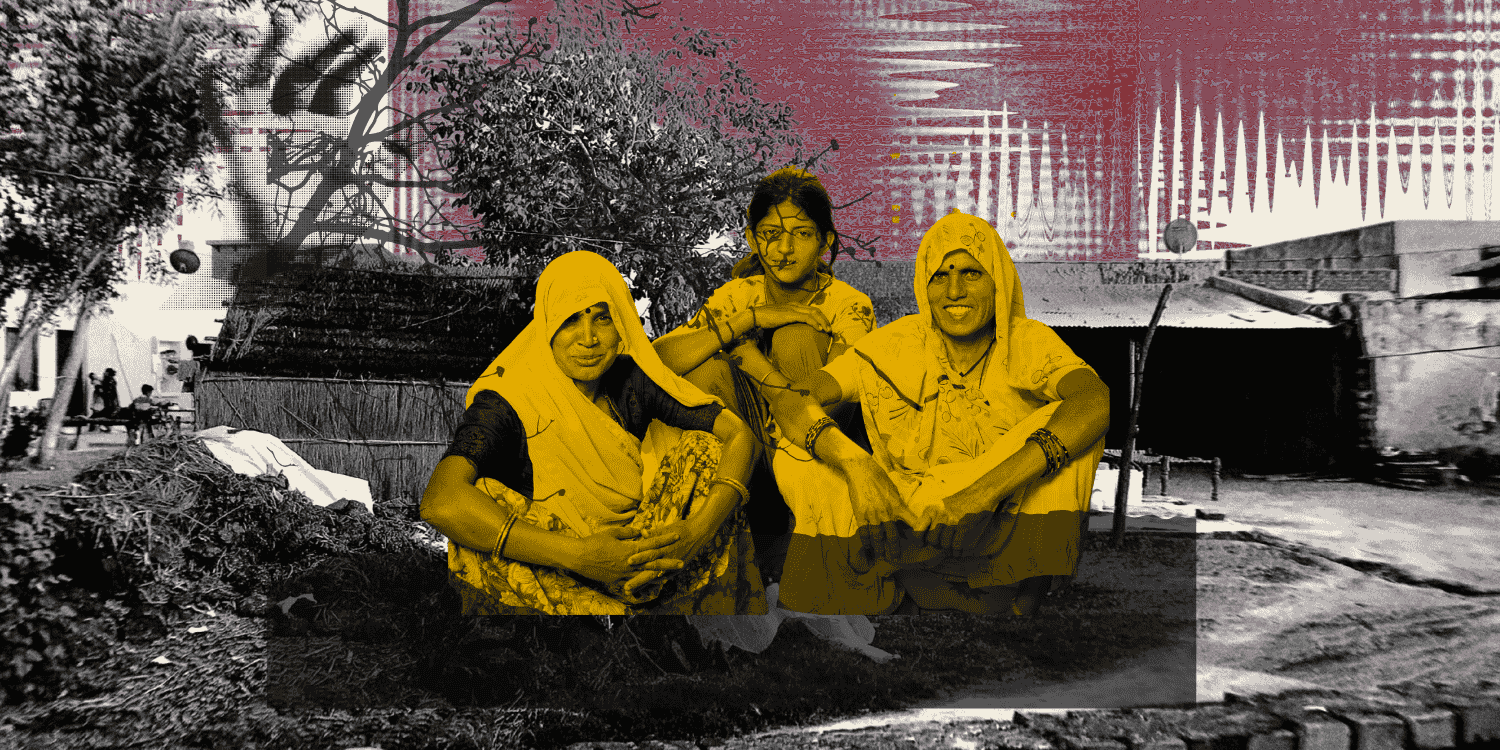Introduction
India has made significant strides in rural electrification, addressing energy poverty and its unique socio-economic development. In line with its global commitments to ‘ensuring access to affordable, reliable, and modern energy for all’, India led with key interventions, including the Pradhan Mantri Sahaj Bijli Har Ghar Yojana, also known as the Saubhagya Scheme. The country also continues to expand its renewable energy capacity and rely on off-grid solutions. India’s leadership announced in 2018 that it had achieved 100% electricity (TOI, 2018). This declaration meant that electricity infrastructure, including distribution lines, had been extended to all villages across the country. However, according to the criteria outlined by the Ministry of Power, ‘a village is considered to be electrified if 10% of the total number of households in the village have been electrified’ (Mishra, 2017). This means that although all villages in India have some electrical connection, 90% of the households in the village do not have reliable electricity (GoI, 2017).
This definition of an ‘electrified village’, as outlined in the Rural Electrification Policy 2006 warrants re-evaluation in the light of the country’s evolving development aspirations, particularly in light of the idea of a new Digital India. In its initial stage, the minimal household electrification for 10% in each village set a pragmatic benchmark for development nearly two decades ago; however, it does not reflect universal energy access. On the one hand, the redefinition of electrification is integral to achieving India’s ambitious development goals. On the other hand, despite the ambitious efforts under the Saubhagya scheme (Pradhan Mantri Sahaj Bijli Har Ghar Yojana) several challenges relating to infrastructure gaps, affordability, and social barriers which aimed to provide electricity to all households by March 2022, fell short of an estimated 17% of households (TOI, 2018).
In many remote villages where extending the central grid was technically or financially unfeasible, off-grid solutions like solar home systems and microgrids have played a crucial role in providing electricity access. Solar home systems have empowered individual households with basic lighting, mobile charging, and small appliances, while microgrids have offered community-level power for schools, healthcare centres, and small businesses. These decentralized renewable energy systems are not only cost-effective but also sustainable, reducing dependency on fossil fuels and contributing to climate goals.
Before the introduction of the Saubhagya scheme in 2017, states like Bihar and Uttar Pradesh faced some of the lowest electrification rates in India. Under the Saubhagya scheme and Deendayal Upadhyaya Gram Jyoti Yojana, by August 2024, 35,59,041 households were electrified in Bihar and 91,80,571 in Uttar Pradesh respectively (MoP, 2024). The successful implementation of these schemes, complemented by decentralised renewable energy solutions, serves as an insightful case to examine both the achievements and the challenges of rural electrification—especially in the context of the global commitments to energy transition discussed at COP29.
Implementation of the Saubhagya Scheme
The Saubhagya scheme was announced in September 2017 to achieve 100% village electrification. The scheme aimed to expand electricity through free metered connection for economically poor households and a charge of INR 500 for households other than the poor (MoP, n.d). The scheme was launched by the government considering the role of electricity in developing socio-economic activities. By the year 2019, under the patronage of the Saubhagya scheme, all households were reported electrified except for 18,734 households in Left Wing Extremists (LWE) affected areas in the state of Chhattisgarh (PIB, 2023).
Key features of Implementation:
1. Decentralized Renewable Energy (DRE)
The scheme focused on electrification not only through grid networks but also by employing tools of decentralized solar power systems for households in inaccessible areas. The scheme taps into India’s residential rooftop solar energy potential, over 25 crore households across India have the potential to deploy 637 GW of solar energy capacity on rooftops (CEEW, 2023).
2. Community Engagement
The Saubhagya scheme also touched an important cornerstone for community engagement. Studies have also known that the scheme has been especially beneficial for women living in rural areas and has provided them with greater agency in their lives (Swarajya, 2018)
3. Private Sector Involvement
One key feature of the implementation of the scheme is that it capitalized on the private sector’s contribution to possible solutions. The private sector has helped in increasing the efficiency of distribution as well as playing an important role in reducing the load on the traditional grid distribution network. Under the scheme, the government made private sector DISCOMs eligible for financial assistance has well. Furthermore, the use of mini and micro grids has created last-mile connectivity solutions for remote households.
4. Funding Structure
The scheme had an outlay of INR 16, 320 crores with a division of 60 per cent funded by the central government, the other 10% by the state government and 30 per cent from loans. Under the scheme, INR 14,109 crore has been allocated by the government to 26 states/union territories against which INR 8,840.9 crore had been released till June 30, 2021 (MoP, n.d).
Challenges in Rural Electrification
While government reports suggest that electrification under the Saubhagya scheme has connected nearly all villages in India to the grid, the actual experiences of rural households reflect some ongoing and persistent challenges.
Reliability has remained a top challenge. Among the houses that do have access to electricity, a significant share of electrified households and commercial establishments face several supply-side challenges, including unscheduled power cuts and poor-quality supply with frequent interruptions and low voltages (ISEP, 2019). High electricity costs have posed a challenge as well. Rejecting the proposal of electricity companies to increase rates, the Bihar State Electricity Regulatory Commission announced a significant reduction of two per cent in electricity rates in March 2024 to be effective between April 01, 2024, to March 31, 2025 (PE, 2024).
In the neighbouring state of Uttar Pradesh, which has shared a similar trajectory, a case study identified certain barriers for households in obtaining electricity. Beyond monetary considerations like low income, the study revealed that households may be unwilling to pay for electricity connections because of poor quality (Blankenship et al., 2020). The electrification scheme for rural households had a cost provision of INR 3000 for free electricity connection for below-poverty line (BPL) households as well; however, the cost has been observed to be inadequate (Mishra, 2017).
The Saubhagya Scheme sought to ensure equitable access to electricity by identifying beneficiaries based on the Socio-Economic and Caste Census (SECC) data from 2011 (Mishra, 2017). This approach aimed to prioritize socio-economically disadvantaged households by providing them with free electricity connections. However, this reliance on data from the 2011 census posed significant challenges. Nearly fifteen years have passed since the SECC was conducted, and the socio-economic landscape of rural India has undergone considerable change during this time. Factors such as population growth, migration, economic shifts, and the COVID-19 pandemic have further exacerbated inequalities, leaving many vulnerable households unaccounted for in the outdated dataset. Consequently, numerous socio-economically backward households that would have benefited from free electricity connections may have been excluded due to their absence in the decade-old records.
According to a research study on the public-private partnership model, primary research showed that mini-grids hold great promise to resolve issues of reliability (Shrimali, 2020). Mini-grid developers in India have been working on models to reduce the cost of per unit electricity and are ready to scale up. In some cases, in rural areas, consumers are stacking up different power sources, such as solar, to fill in the gaps in periods of power cuts, but these practices remain few and far between those with economic resources. People in these areas also prefer decentralised electricity over the main grid, even if it is more expensive, as long as it is of better quality (Khanna, 2024).
Business models where mini-grid operators act as a distribution franchisee that enables higher grid reliability using battery storage with limited generation from the DISCOM can create complementary solutions (Shrimali, 2020). However, the uptake of these models has been slow for households across the country, especially those in rural areas, although a general sense of customer trust has been earned. Yet, the scheme has not been able to utilise the potential of the private sector completely. Moreover, outdated data usage has created disparities in targeting and implementation. For instance, families that have fallen into poverty after 2011 or newly formed households—especially in states with high population growth rates like Bihar and Uttar Pradesh—are likely underrepresented. This raises questions about the inclusivity of the scheme and whether it has effectively reached the most marginalised communities.
Impacts of Rural Electrification in Bihar
Historically, Bihar has been considered to be one of the least electrified states and has also thus been one of the most crucial markers of the success of the electrification schemes such Saubhagya scheme and those before it. However, varied data resources show that under the Rajiv Gandhi Gramin Vidyutikaran Yojana, As per the data provided by Rural Electrification Corporation, the state had achieved 85.7% electrification for un/de-electrified villages by the year 2010 (NIC, 2010). The central government has pushed for the state government of Bihar to expedite the process of electrification (Salomi, 2016).
Under the DDUGJY, the Bihar government expanded its rural household electrification; by May 25, 2017, more than 13,523 villages received household electricity; however only 8% of the villages had also all the houses electrified (Patil, 2017). There has been considerable discrepancy in electrification data over the years, both before and following the implementation of the Saubhagya scheme; however, it is important to acknowledge the significant achievements of earlier electrification initiatives, while also noting that the current definition of electrification remains limited in its scope.
Despite changing approaches, the impacts of non-reliable power supply are felt throughout the rural socio-economic set-up. Limited access to electricity has hindered educational outcomes and opportunities as children are forced to rely on kerosene lamps which provide low lighting. Grid connectivity for healthcare centres although prioritised has still suffered interruptions, a survey revealed that 7% of health centres experience a daily power cut of more than 8 hours (Parikh, 2021). On average, in Bihar, there have been noted to be 14.8 hours of electricity supply on grid connectivity (RF& SPI, 2019).
Such unreliable electricity supply hampers the functionality of medical equipment, compromising patient care, in some instances doctors have been forced to use mobile phone flashlights during treatment of patients (Sengar, 2022). The state nodal agency in the state, BREDA has initiated the installation of roof-top solar systems in the health centres and schools (Parikh, 2021). However, the uptake of non-grid sources for households remains low, in Bihar only 18% of households use non-grid resources for electricity (RF& SPI, 2019). These challenges perpetuated cycles of poverty and migration, with many rural inhabitants seeking employment in urban centres.
According to government figures, the Saubhagya Scheme has made substantial progress in Bihar, increasing the electrification rate to 100% by 2018. Over 3.25 million households in the state have gained access to electricity, leading to improved educational and healthcare outcomes and a boost in rural entrepreneurship (REC, 2019).

However, gaps remain. Issues such as frequent power outages, low voltage, and the high cost of electricity bills for poor households continue to undermine the scheme’s long-term impact. Additionally, specific challenges in states like Bihar, where issues such as electricity theft significantly undermine efforts to ensure reliable access. Bihar has one of the highest transmission and distribution (T&D) losses in India, largely due to widespread power theft. Illegal taping of power lines, coupled with poor enforcement and inadequate infrastructure, contributes to these losses (Mani, 2023). Electricity theft not only hampers the financial stability of distribution companies (DISCOMs) but also leads to frequent power outages and voltage fluctuations, further affecting rural communities.
International Discussions at COP29
Rural electrification has been one of the top developmental agenda for developing countries like India. Even as a part of the Conference of Parties (COP29) side events, the discourse on rural electrification was integral to the broader climate action agenda. India played a significant role in these discussions.
As a leader in renewable energy and a proactive approach to enhancing clean energy, India emphasized the need for climate finance to support rural electrification. Although India has achieved 100% household electrification, challenges persist in the form of power interruptions, grid reliability, and accessibility in remote areas. Renewable energy has played a crucial role in addressing some of these gaps; however, cost remains a significant barrier. Electricity generation from coal continues to be substantially cheaper compared to solar or wind power, making the transition to renewables financially challenging for many regions.
During COP29, India advocated for adequate financial support from developed countries to facilitate its transition to sustainable energy and to meet its climate goals (Suman, 2024). At the same time, as a top emitter, the country also needs to keep in account meeting its energy demands from cleaner energy.
India estimates that achieving its ambitious energy transition targets will require an investment of approximately US$200 billion (Suman, 2024). This substantial financial need highlights the critical role of international climate finance in supporting developing countries like India as they work toward cleaner energy systems and reduced emissions.
In the context of the new climate finance deal proposed at COP29, India has strongly rejected the agreement, citing its inadequacy in addressing the pressing financial challenges faced by developing nations. The deal, which pledges to mobilize US$300 billion annually by 2035, has been criticized by India as “too little, too late” (Srivastava, 2024).
Indian negotiators have emphasized that the funding commitment falls significantly short of the immediate and substantial resources required to meet energy transition goals and build climate resilience.By rejecting the deal, India has underscored the need for more immediate, adequate, and equitable financial support from developed nations.
Conclusion
For decades, in the development journey of India, rural electrification has been a cornerstone of the nation’s developmental agenda, with the Saubhagya scheme marking a significant milestone in achieving universal household electrification. In bridging the gap between opportunities in rural and urban India, the country can move towards inclusive sustainable development.
The Saubhagya scheme has contributed to transformative changes in education, healthcare and livelihood improving the quality of life. However, some challenges need to be addressed as well. Despite achieving 100% household electrification, issues such as power reliability, frequent outages, and grid inefficiencies remain widespread. Other socio-economic factors also lead to increased theft of electricity in specific locations including states such as Uttar Pradesh and Bihar. These challenges disproportionately affect rural communities, where the lack of dependable electricity undermines growth.
Additionally, the use of outdated data, such as the 2011 Socio-Economic and Caste Census, has excluded many socio-economically disadvantaged households.
Renewable energy has emerged as a key enabler in bridging these gaps, especially in remote areas where grid connectivity is challenging. Solar and wind energy solutions, for instance, have proven effective in providing decentralised and sustainable power to rural communities. However, the higher costs of renewable energy compared to coal-based power generation remain a significant barrier. To overcome this, India needs robust financial support, technological advancements, and capacity-building measures to scale up renewable energy deployment in rural areas. The global stage, particularly forums like COP29, provides an opportunity for India to align its rural electrification efforts with international climate action goals. However, India’s rejection of the recent climate finance deal highlights the need for more substantial, immediate, and equitable support from developed nations.
In conclusion, rural electrification in India is both a developmental imperative and a climate action priority.






